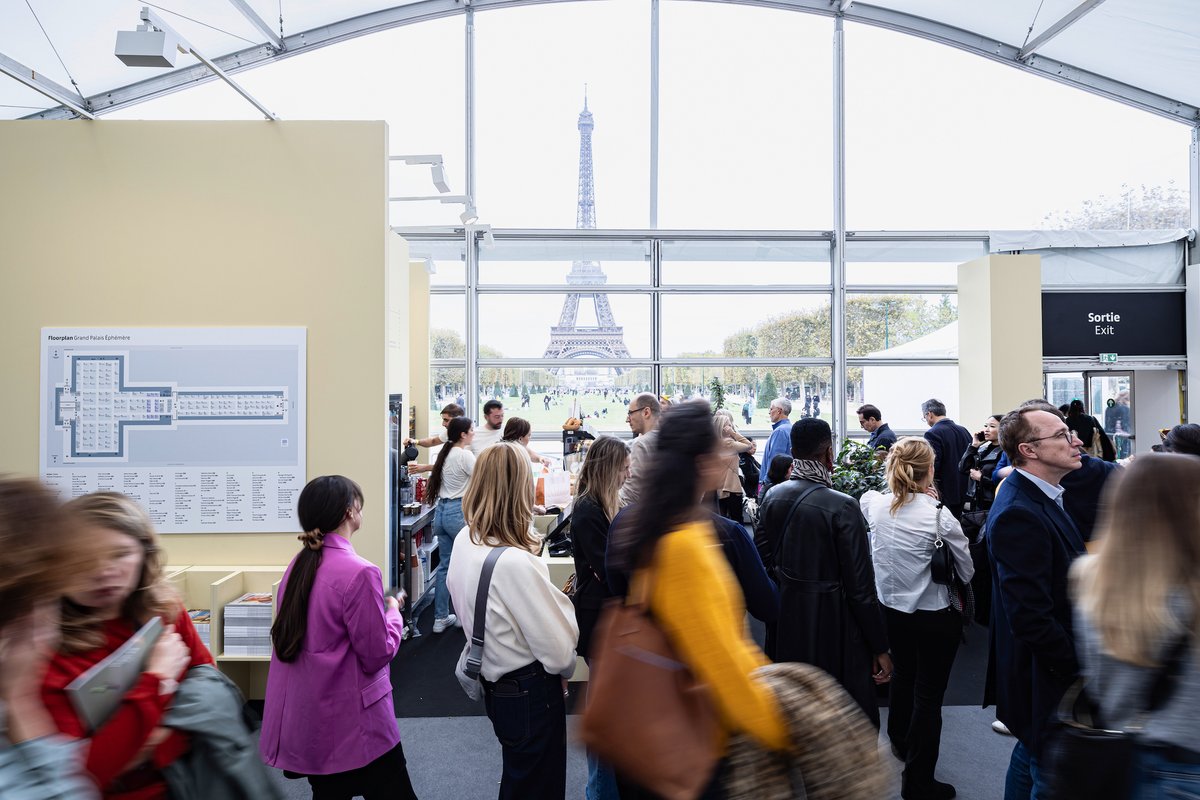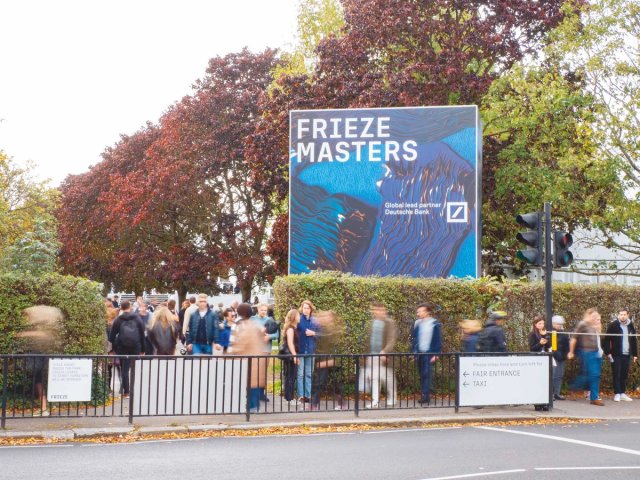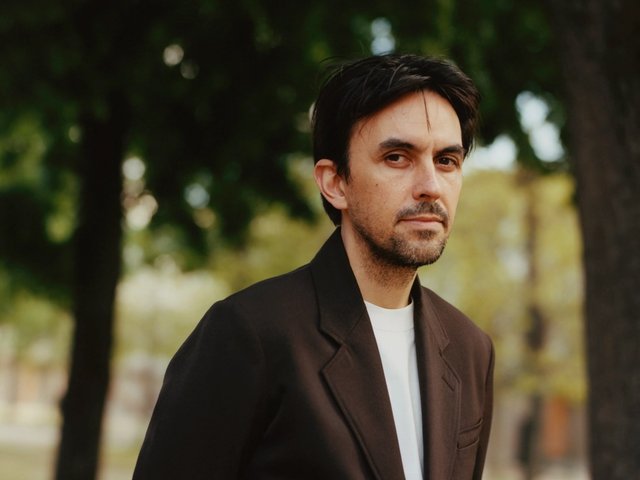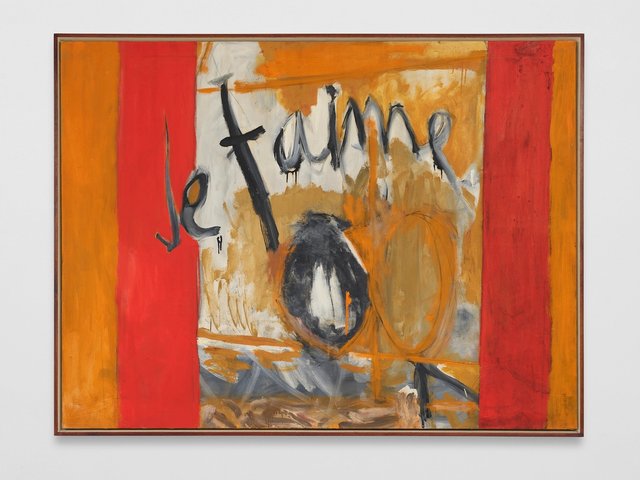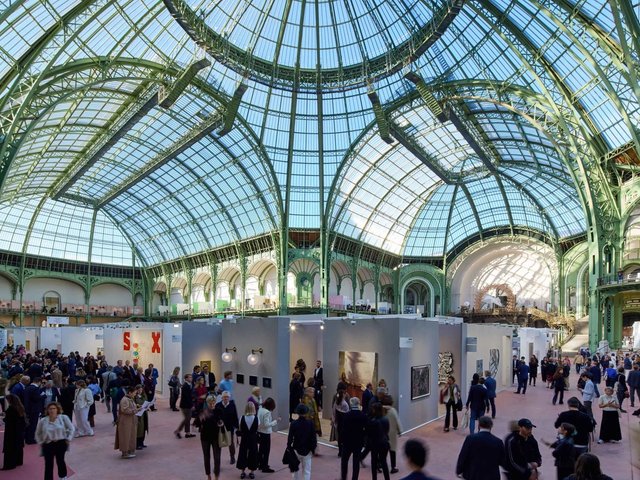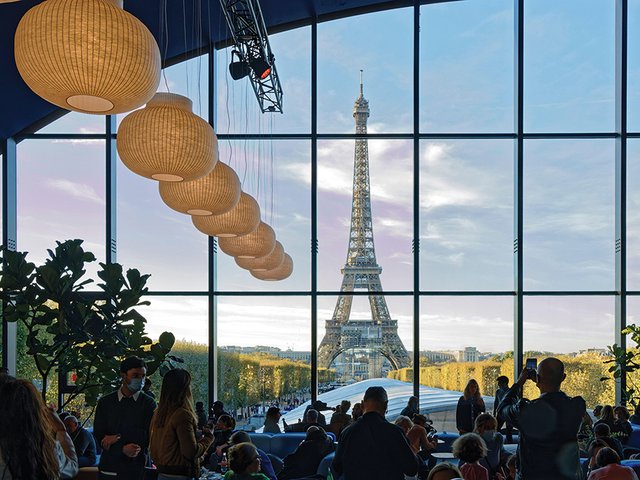People elbowed past each other amid the crowds during the first hours of Paris+ by Art Basel, which opened its second edition today (until 22 October). “It’s heaving, and with a lot of Americans,” said a dealer at Pace, standing by a 1956 Rothko painting in shades of red and olive, not seen in public for more than 30 years, and now offered by the gallery for $40m.
Such observations are shared by David Zwirner: “There are more American collectors at Paris+ than there were at [last week’s] Frieze London,” he said. His gallery shifted $20m worth of art today at the fair, including Paris+’s highest-valued reported sale thus far: a 2023 Kerry James Marshall painting, for $6m. The gallery did not report a single seven-figure sale from Frieze London.
A slew of major institutional exhibitions, the launch of the Design Miami/ Paris fair and the opening of three major international galleries in town, are also contributing to a sense of sustained strength within the city’s art scene. The figures say as much too: France's art market grew from $4.7bn to $5bn in 2022, according to the most recent Art Market report by the economist Clare McAndrew, published by UBS and Art Basel.
“Look at the number of collectors here! There are more than at Fiac,” said the Cologne dealer Thomas Zander, comparing Paris+ to the fair it usurped last year. He will open a gallery in the French capital this week. “Paris+ confirms its major importance,” said Kamel Mennour, one of the city's most established gallerists, in a statement. “Since the opening this morning, the concentration of international collectors, curators and art world players, is extremely high and energising.” Works Mennour sold at the preview include an oil painting by Eugene Carrière to a private French collection, for €52,000 and a 2023 mirror and marble piece by Ryan Gander, to a private Canadian collection, for £95,000.
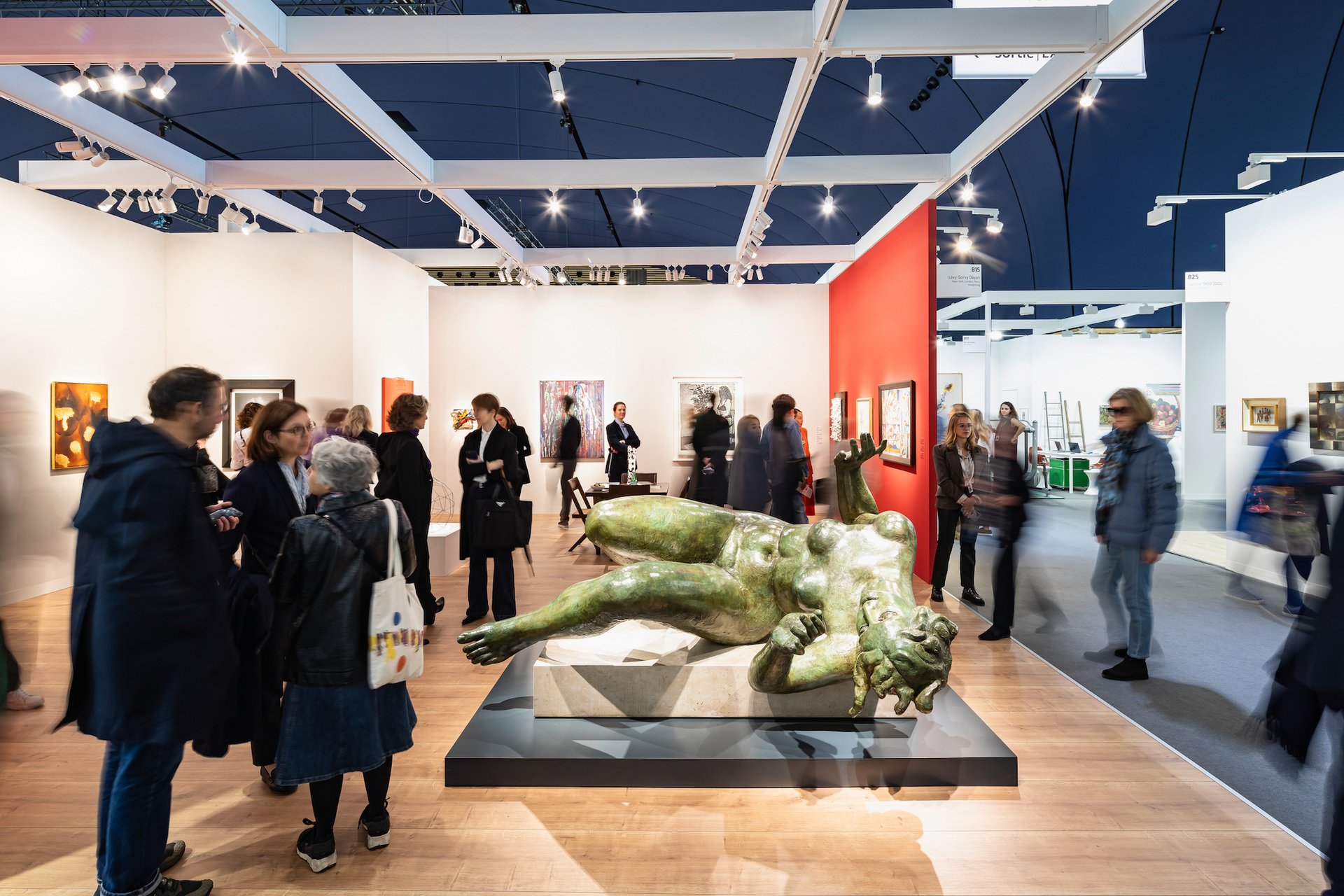
Visitors during the VIP preview of the 2023 edition of the Paris+ by Art Basel fair Courtesy of Paris+ par Art Basel
“It’s hard to tell yet whether attendance is high or the venue is just small,” said Jason Hwang, a co-owner of High Art gallery, which operates spaces in Paris and Arles, southern France. This is the last edition of the fair to be held in the temporary Grand Palais Éphémère venue. Next year it will shift across the Seine, to the actual Grand Palais, which is currently being renovated. Doing so will allow Art Basel to bump up exhibitor numbers by around 25%, and increase stand sizes too. This year, 154 galleries take part, around a third of which are from France.
A fair amid global tragedy
Heaving or not, the general mood feels muted, and for harrowing reasons. A fatal terrorist attack in France last week, linked to the Israel-Hamas war, has led to the interior minister issuing the highest level of national alert and banning pro-Palestinian protests. Art Basel has responded by installing anti-ram vehicle barriers around the venue, increasing the physical presence of security at the fair and suspending the use of the cloakroom.
“This latest escalation in violence grieves us not only as individuals but as members of a global cultural community whose essential values of humanity, mutual respect, and dialogue are at its core,” Art Basel’s chief executive, Noah Horowitz, wrote in an email sent to Art Basel attendees on Sunday.
A number of dealers approached by The Art Newspaper declined to comment on the subject. Still, some are willing to address the situation. “I am so concerned about events in the Middle East. We don’t realise we are losing part of our civilisation,” said Franck Prazan, the director of Paris gallery Applicat-Prazan. He sold a work by the artist Jean Helion to the Musée d’Art Moderne de Paris (L'atelier, 1953).
The tragedy unfolding in the region is likely to dampen sales, with some collectors understood to have cancelled tickets to France. “Some people I know are not coming because of what is happening [in Israel and Palestine]," said Javier Peres, the founder of Peres Projects, which has spaces in Berlin, Milan and Seoul.
Dealers were more happy to discuss comparisons between Paris+ and Frieze London. Peres agrees that more Americans have shown up for the Paris fair, with Asian collectors roughly the same between both. Some of his clients “chose between the two”. Still, he notes that for him the difference between the two fairs is “pretty minimal” with “similar works, price points, and thought processes” placed behind both stands. The only key difference is “the smaller booth sizes in Paris, which will change next year”. Peres Projects pre-sold five works; its presentation is priced between $5,000 to $75,000, and features a drawing by Rebecca Ackroyd and paintings by Anton Munar.
For the tier of the market that Peres deals in, several months of hiked interest rates and decreased lending by banks have not been as impactful as at the top end, he said. “If you’re taking out loans for a $50,000 painting, I don’t know you and you don’t know my gallery.”
But a downturn in the global financial markets has not deterred gallerists from bringing works in the seven and even eight figures to the fair. Not all of these have been snapped up yet—that $40m Rothko on Pace’s stand is yet to sell. But this is “typical for works like these”, said a Pace spokesperson. “At our most recent Art Basel stand, a $14m Joan Mitchell painting, one of the most expensive works we brought, didn’t place until day three. These things should take time, especially for a work like the Rothko, which hasn’t been seen in decades.” The spokesperson continues that “two conversations” are currently taking place around the Rothko. Delphine Arnault, the daughter of France’s richest man and LVMH owner, Bernard Arnault, was seen eyeing the work, flanked on either side by bodyguards.
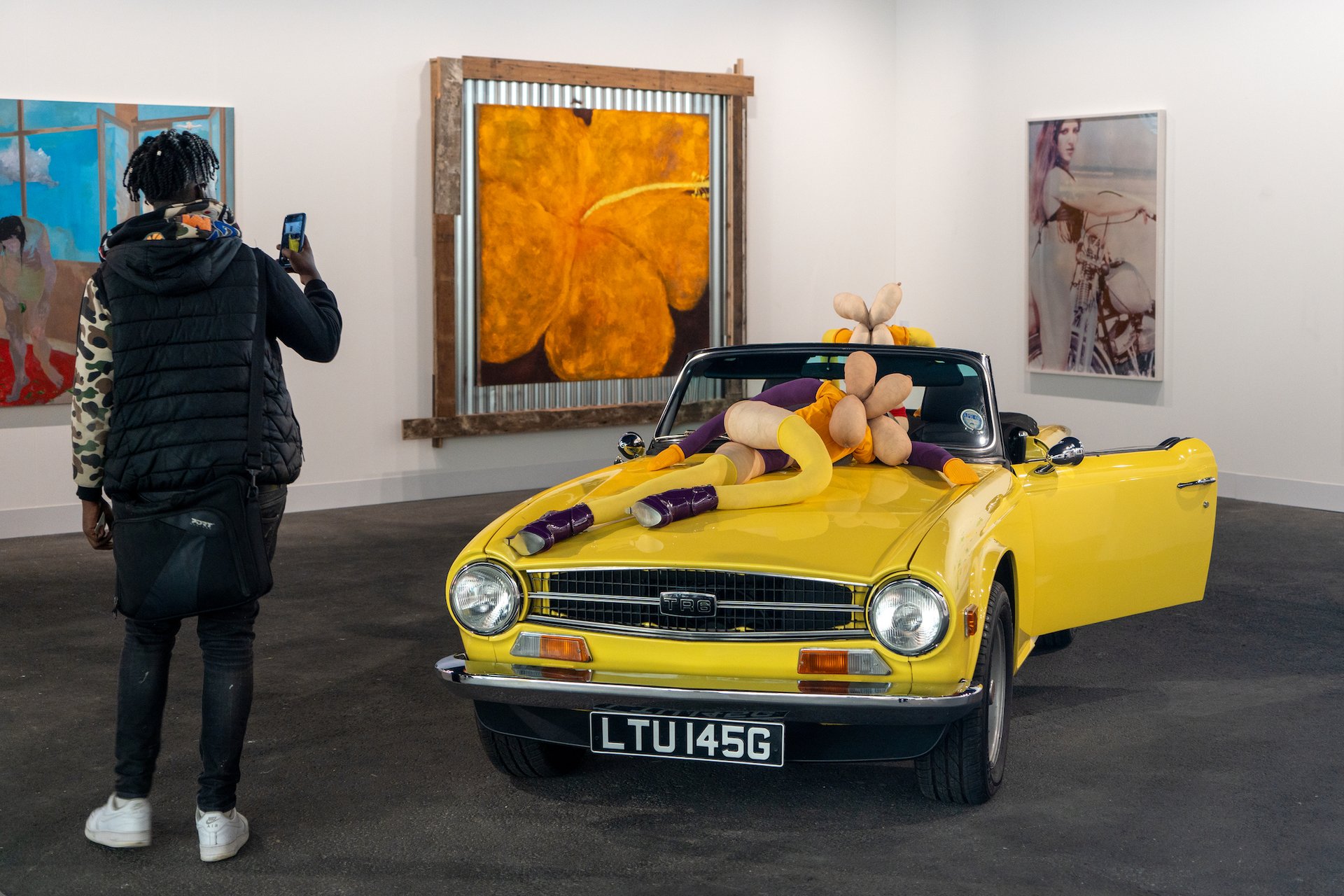
A sculpture by Sarah Lucas on the Sadie Coles HQ stand at Paris+ by Art Basel Courtesy of Paris+ par Art Basel
Keeping prices somewhat more conservative has worked out for Hauser & Wirth, which sold out its booth by 2pm on Wednesday. The most expensive work shifted was a 2023 George Condo painting for $2.3m. A spokesperson for the gallery points out that while its stand at Frieze London did not sell as quickly, it was dedicated to a solo presentation of Barbara Chase Riboud, making clear comparisons difficult.
Speaking to the wider state of the market, the gallerist Thaddaeus Ropac said: “Last year was an exceptionally good year and in a way that wasn’t sustainable, so it’s no surprise and not a bad thing that things have calmed down this year.”
At lower price points, a strong reception for some unusual works could be observed. At Galerie Poggi from Paris, which opened an expanded space this weekend, three large glass sculptures by Ittah Yoda, filled with perfumes, all sold for $8,000 each. And Fitzpatrick Gallery, established in 2020 and also from Paris, placed a new wall-hanging work by Mathis Altmann, made from an LED Matrix panel, wood and metal, with a private foundation for €20,000.
Still, these offerings remain somewhat few and far between, with Paris's reputation as a city full of beautiful, tasteful objects, rather than daring and dangerous propositions, still hard to shake. “Everything was so boring, I can’t recall a thing I saw,” a Berlin-based curator, who wishes to remain anonymous, said of several exhibitions at major galleries in the Marais district.
Of course, this is to be expected in such trying times. “Most dealers have focused on steadily navigating what is generally agreed to have been a slow year, and I suspect this will continue until at least this time next year,” said Henry Little, an art adviser at the Fine Art Group. “If you want to stay in business, now is not the time for big gambles on radically uncommercial projects.”
- Paris+ by Art Basel, until 22 October, Grand Palais Éphémère, Paris


